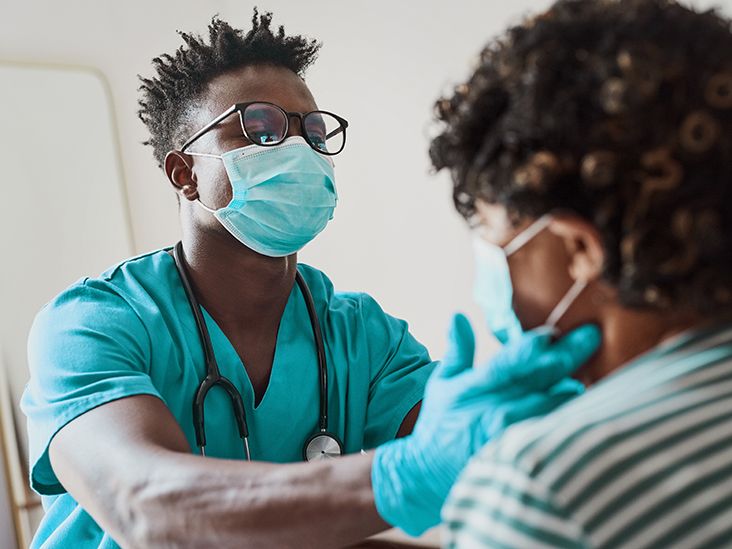Key Takeaways
- The overall 5-year relative survival rate for non-Hodgkin’s lymphoma is 74%, with survival rates highest in lymphomas caught in early stages and that are slow growing.
- The outlook depends on key factors, including age, stage of cancer, spread of disease, performance level, and serum lactate dehydrogenase levels. Younger people and those in better health generally have better outcomes.
- Non-Hodgkin’s lymphoma can be curable with proper treatment. Doctors consider the cancer cured if it remains in complete remission for 5 years or more, though there’s still a small chance of recurrence even after this period.
Lymphoma is a group of cancers that start in the lymphatic system. There are more than
The American Cancer Society reports the overall 5-year relative survival rate of non-Hodgkin’s lymphoma is
Read on to learn more about the short- and long-term outlook for people with non-Hodgkin’s lymphoma.
The World Health Organization (WHO) recognizes more than 60 subtypes of non-Hodgkin’s lymphoma. Non-Hodgkin’s lymphomas are
Remission is when the signs and symptoms of your cancer are reduced. If they go away completely, doctors consider it complete remission.
Most cancers that return do so within 5 years. Your doctor may be reluctant to use the term “cured” because even if your cancer has been in complete remission for more than 5 years, there’s a small chance the cancer will come back.
Lymphomas are classified as “aggressive” if they’re expected to progress quickly and “indolent” if they’re slow-growing.
People with indolent lymphomas generally have a better outlook. The most common type of aggressive non-Hodgkin’s lymphoma is diffuse large B-cell lymphoma (DLBCL). The most common indolent non-Hodgkin’s lymphoma is follicular lymphoma.
The overall 5-year relative survival rate of DLBCL is 65%, and it’s 90% for follicular lymphoma, states the
After you receive a diagnosis of non-Hodgkin’s lymphoma, your oncology team can help you develop a treatment plan.
Undergoing cancer treatment can be difficult for you and your family. Many people face problems such as:
- physical impairments
- fatigue
- stress
- financial difficulties
In a
In the study, people with aggressive lymphoma experienced more fatigue, shortness of breath, insomnia, and appetite loss. But at a follow-up an average of 4 years later, there was no difference between the groups.
In a
And in a 2018 study, researchers found that the quality of life of people with aggressive non-Hodgkin’s lymphoma may improve comparably to the quality of life of the larger population with longer survival, mostly due to physical improvements.
Doctors often use 5-year survival rates to estimate the chances of survival from a cancer. For example, a 5-year survival rate of 70% means 70% of people with a certain cancer are expected to be alive 5 years later.
Relative 5-year overall survival rate is also commonly used. A relative 5-year survival rate compares the number of people still alive with a certain cancer to the number of people without the cancer to isolate deaths directly caused by the disease.
For example, a relative 5-year overall survival rate of 70% means a person with a certain cancer has a 70% chance of being alive 5 years later compared with a person without the cancer.
Survival rates are sometimes reported for other intervals, such as 1, 3, 10, and 15 years.
5-year survival rate
According to the National Cancer Institute’s
| Stage | Relative 5-year survival rate |
|---|---|
| localized | 86% |
| regional | 77.8% |
| distant | 67.3% |
| unstaged | 73.9% |
10-year survival rate
According to
| Stage | Relative 10-year survival rate |
|---|---|
| localized | 79.2% |
| regional | 69.4% |
| distant | 56.7% |
| unstaged | 65.8% |
The
| Factor | Positive outlook | Negative outlook |
|---|---|---|
| Age | below 60 | above 60 |
| Stage | stage 1 or 2 | stage 3 or 4 |
| Spread | lymphoma in 1 or no areas outside lymph nodes | lymphoma in more than 1 organ outside of lymph nodes |
| Performance | normal daily function | need significant help with daily activities |
| Serum lactate dehydrogenase | normal levels | high levels |
Your outlook also depends on your overall health and the specific type of lymphoma you have.
Does treatment type affect outlook?
The outlook for people with lymphoma has improved in recent years, largely due to improvements in treatments like
For example, the 1-year relative survival rate of non-Hodgkin’s lymphoma in 2000 was
A large reason why younger people and people in better health generally have a better outlook is that they can handle more chemotherapy and radiation therapy, but side effects become more likely at higher doses.
Your oncology team can help recommend the best treatment for you.
Life expectancy statistics can give you a general idea of what to expect, but it’s important to talk with your cancer team to get an individualized outlook.
Life expectancy statistics don’t consider individual factors that influence your response to treatment, like your age and overall health.
Actual chances of survival are often higher than life expectancy statistics suggest. Generally, statistics are updated about every 5 years, but treatment may improve over this time frame.
The outlook for people with non-Hodgkin’s lymphoma isn’t generally as good as that of people with Hodgkin’s lymphoma, but it still has a better outlook than many other cancers. More than 70% of people live longer than 5 years after their diagnosis.
Your outlook depends on factors such as your overall health, age, and the type of non-Hodgkin’s lymphoma you have. Your healthcare team can give you the best idea of what to expect.








